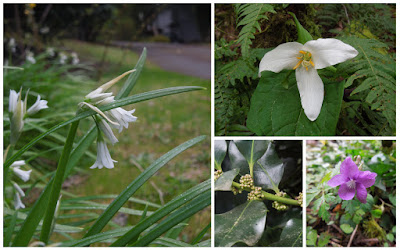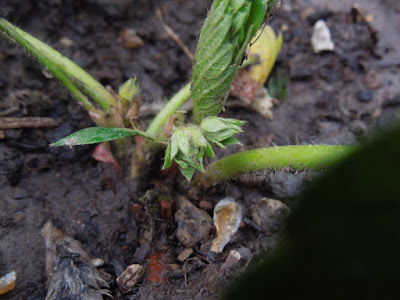Counting Flowers...
Yes, I know that “April showers bring May flowers.”
At the moment, it's still April.
At the moment, though, we’ve got a lot of April flowers.
Yesterday, on a walk, we started looking for different colors of flowers. (My initial goal was to slow my oldest child down a bit, so that the rest of us could keep up with him. I used to think there was no way I could ever run any substantial distance--that seems to changing now, as a matter of necessity.)
At the moment, though, we’ve got a lot of April flowers.
Yesterday, on a walk, we started looking for different colors of flowers. (My initial goal was to slow my oldest child down a bit, so that the rest of us could keep up with him. I used to think there was no way I could ever run any substantial distance--that seems to changing now, as a matter of necessity.)
Anyway, today, we decided to count all the flowers in our yard--and a few more around our neighborhood. It made for a good outdoor preschool activity, and kept us busy for at least an hour, including a short walk through our local area.
Any guesses how many flowers we found?
At least 40.
I didn't take pictures of everything we saw--and we only picked flowers in our own yard (not counting the dandelions next to the road), but we found 40 unique species of flowers, counting bulbs, weeds, and even trees.
That’s just the ones with some sort of buds, or flowers, or in a couple cases, old flowers.
Just in our yard, and the edge of our neighbor’s yard: bluebells, forsythias, azaleas, purple violets, forget-me-nots, rosemary, daffodils, dandelions, cherry laurels, cherry trees, lilacs, holly buds, and rhododendrons.
(To be honest, our rhodie only has buds at the moment--but we did find one with flowers on our walk.)
Oh, and then there were the flowers you might not think about: pussy willow, hazelnut, Douglas fir, and big-leaf maple.
Then, we went for our walk. Within half-a-mile or so of our house, we found so many cultivated flowers, as well as a number of wild flowers: tulips, primroses, camellias, candytuft, heather, yellow violets, and trilliums.
To that, we added in the strawberry buds and dogwood buds that will be opening the in the next couple of weeks, and all the various weeds, and other flowers that I couldn’t identify.
Want to try this yourself?
Pick something simple:
- In the spring, flowers are just showing up, so they're a great choice.
- During the summer, you might want to look for bugs or or birds.
- In the fall, try counting different types of trees.
- In the winter, look for twigs that are growing new buds and see how many different colors and textures you can find.
Looking for something more complex? Find a leaf, and count how veins it has. Compare that with another leaf from the same tree, and then compare those leaves with one from a different type of tree. Try this with flowers, counting the number of petals on a flower--or bugs, counting their legs to see if they are an insect or not!
For older students, you can use flowers to introduce charts and frequency. Pick one theme (color, shape, type of flower, etc), and show children how to create a chart based on that theme. For example, to chart different colors, you can write each color down one side of the paper, and then ask children to mark down each time they find a flower (or a patch of flowers) with a particular color.
Once the students have recorded their observations, compare the marks to see which colors are most common, and which ones are rare.
Interested in more nature-themed activities for exploring colors? Check out my picture book Can a Tree Be Blue, along with the resources here.
Have you ever stopped to count the flowers in your yard? What did you find?








Comments
Post a Comment